 Jurassic World
Jurassic World
Starring Chris Pratt, Bryce Dallas Howard, Vincent D’Onofrio, Omar Sy, Judy Greer, and Nick Robinson
Directed by Colin Trevorrow
Rated PG-13
Run Time: 124 minutes
Genre: Action-Adventure/Sci-Fi
Opens June 12th
by Michael Clawson of Terminal Volume
Jurassic World desperately craves 1993, when CGI was in its infancy, the internet was not in wide use, and when dinosaurs could inspire awe and wonder from all who gazed upon them. Just picture the film as a Scooby Doo villain, an old crotchety man shaking his fist: “If it weren’t for those meddling kids and their Tweeter and their Facepages, then this park would be the greatest park ever.”
I’m not one to miss the 1990s, but Jurassic World makes me yearn for those halcyon years, before we became cynical and jaded, before we started turning our back on the Mona Lisa to take selfies with selfie sticks, before we started thumbing our nose at the marvelous. That’s the attitude of Jurassic World, in which a theme park with living, breathing, chomping dinosaurs is struggling to pay its bills because “no one is impressed by dinosaurs anymore.” Times are so tough that they have bio-engineer the Indominus Rex, whose DNA is a chunky stew of other creatures’ chromosomes. Kids these days, the film laments, they just want their phones, their Snapchat, and a hoodie to retreat into. One character has to be reminded to put his smartphone down to see a Titanic-sized sea monster gobble a great white the way we crunch on goldfish crackers.
This is Jurassic World’s most fundamental failure: it wants us to believe that a theme park with dinosaurs would get old. Lions, tigers and elephants have existed longer than man has, yet we still line up to gaze at them at zoos, so what makes Jurassic World thinks we’d be bored with cloned dinosaurs? It’s an idiotic concept that produces no fruit, just leafless limbs that end in broken stumps, and it’s a premise that the entirety of the film is grown around. More on that later.
Jurassic World has many failings, but it is, first and foremost, a rip-roaring dino-adventure. If you watched the first three films and thought “not enough dinosaurs” then this fourth entry in the franchise has you covered in every combination imaginable: I-Rex on raptor, mosasaurus on I-Rex, pterodactyl on human, human on raptor, T-Rex on human, T-Rex on I-Rex … so many variations that it sounds like an erotic personals section in a paleolithic newspaper. The scenes are long and action-packed, and they give heroic treatment to dinosaurs that were only glimpsed at in previous films. The velociraptors, so often the villains in the other pictures, are essentially good-guy sidekicks here. Think of them as trained orcas at SeaWorld, another disaster park with deadly man-eating attractions.
The raptors are trained by Owen (Chris Pratt), who was with them when they hatched and who now oversees their development as park stars. They may know tricks, but they’re still deadly predators as we see in an early scene involving a rookie taking a spill into their pen. (My question here is why didn’t Owen use the raptor flute from the third movie, but then I remembered that even a raptor flute is too ridiculous for this movie.) Owen has to fight back a corporate stooge who wants to militarize the raptors into some kind of living battle-drones. I wish I could tell you this character was played by Paul Reiser from Aliens, but I cannot — he is played by Vincent D’Onofrio who actually has the line, “These things would have been great in Tora Bora.” At the conclusion of this line the sound of 400 collective eye-rolls was loud enough to fill the theater in 3D sound.
Owen flirts occasionally with park director Claire (Bryce Dallas Howard), who is busy negotiating deals around the park, including a Verizon Wireless sponsorship —”what’s next, the Pepsisaurus?” a computer tech asks. (Yes, says Pepsi.) Clair is hosting her nephews, Zach and Gray, who are taking some time for themselves so their parents can divorce, because what you want in a dinosaur movie is lots and lots of family drama.
As Zach and Gray set off into Jurassic World the film wonderfully establishes the setting as a working theme park, something way beyond what even Jurassic founder John Hammond could have hoped to achieve. There are canoe trips down brontosaurus-lined rivers, herbivore tours inside glass gyro-bubbles, an aviary with winged creatures, and many opportunities to watch carnivores gobble up their lunches in bloody clouds of pink mist. The mosasaurus exhibit is especially nifty: the bleachers begin at the topside at the lagoon with live feedings, and then they lower behind glass walls to get submerged views of the croc-like monster. An absolutely adorable petting zoo with pudgy little leaf eaters makes an appearance as well, and it is cuteness overload.
People look like they’re having a lot of fun, but the evil “board” doesn’t like sagging numbers, so they greenlight the I-Rex, which is smarter than any character in the film and has heat-vision like the Predator. And this is where Jurassic World loses its damned mind. The dinosaur itself is awesome, but its existence, its origins, its supernatural powers … it’s all a bit much. Of course it escapes, of course it goes on a killing rampage, and of course every human character suddenly decides it’s time to make the worst decisions of their lives. I want smarter characters in a movie about the genius of mankind. Instead I get Claire, who would rather watch dinosaurs regurgitate half-chewed guests then evacuate the park; Owen, who carries a John Wayne-style lever-action rifle when everyone else carries machine guns; the military guy who apparently has a contract from Weyland-Yutani; and the Jurassic’s CEO, who fatefully admits in his first scene that he’s got two more days of flying to get his helicopter pilot's license. Yep, that helicopter is totally crashing.
The characters in the original Jurassic Park were guilty of hubris and for “playing God,” but they were generally smart people taken down by a computer hacker with selfish motives. In Jurassic World, though, the gruesome deaths — including one entirely unnecessary devouring of Zach and Grey’s wedding-planning babysitter — are entirely linked to the complete and utter stupidity of the plot, its characters and director Colin Trevorrow, who jams so much garbage into his film that you have to wonder if he really wanted to make a movie about dinosaurs at all.
The biggest failure, though, is that Jurassic World truly believes that dinosaurs alone aren’t enough, which is why it throws in a romance, family drama, battle-raptors, sulking teens, obsessive marketing mavens and that hulking bio-fabricated dinosaur. “We have to up the wow factor,” one characters says.
“They’re dinosaurs — they’re wow enough,” responds Owens. Amen to that.
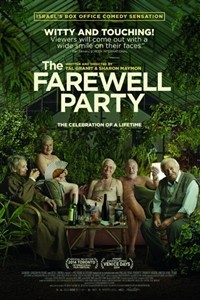 The Farewell Party
The Farewell Party

 Jurassic World
Jurassic World
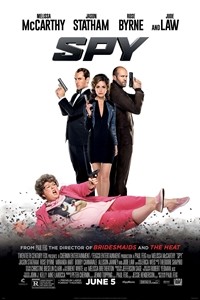 Spy
Spy
 Insidious: Chapter 3
Insidious: Chapter 3
 Entourage
Entourage
 Aloha
Aloha
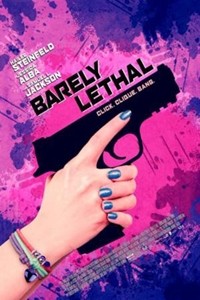 Barely Lethal
Barely Lethal
 San Andreas
San Andreas
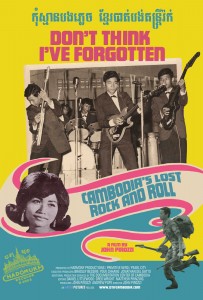 Don’t Think I’ve Forgotten: Cambodia’s Lost Rock and Roll
Director: John Pirozzi
Don’t Think I’ve Forgotten: Cambodia’s Lost Rock and Roll
Director: John Pirozzi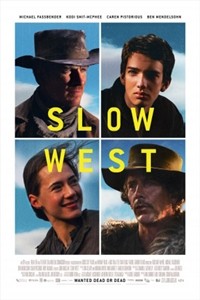 Slow West
Slow West
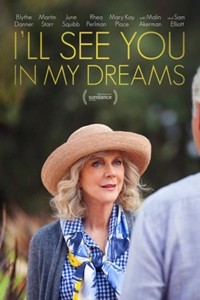 I'll See You in My Dreams
I'll See You in My Dreams
 Tomorrowland
Tomorrowland
 Good Kill
Good Kill
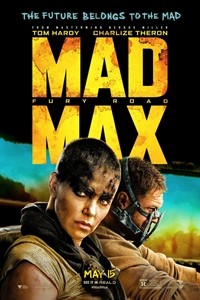 Mad Max: Fury Road
Mad Max: Fury Road








